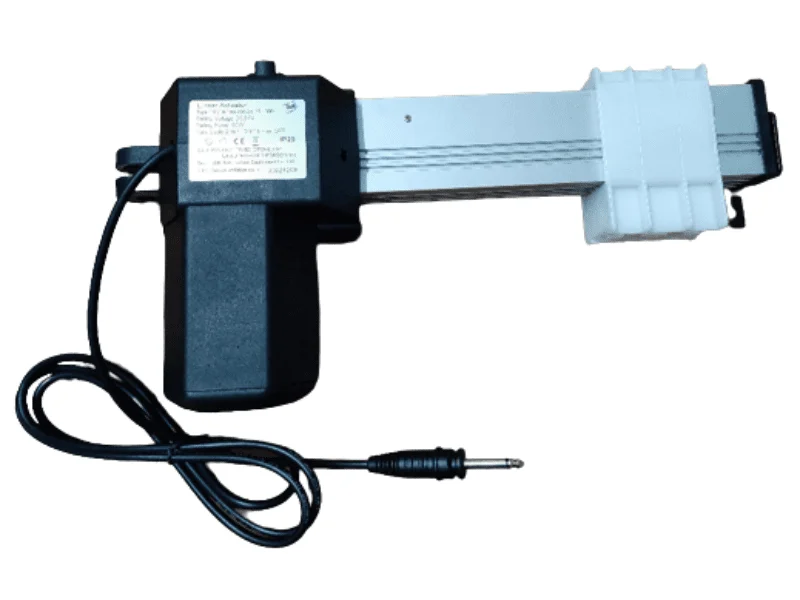Alright, folks, let’s dive into the fascinating world of electric pneumatic actuators. Imagine the unsung heroes of the automation world, tirelessly working behind the scenes, making things move, lift, push, and pull—all with the precision of a Swiss watch. These little powerhouses are everywhere, from your dentist’s chair to industrial robots, hospital beds, and even smart home devices.
What is an Actuator?
First things first, let’s break down what an actuator is. In simple terms, an actuator is a device that converts energy (usually electrical, hydraulic, or pneumatic) into mechanical motion. If you’ve ever marveled at how a car door locks or how a hospital bed adjusts its height, you’ve witnessed actuators in action.
Types of Electric Actuators
Now, let’s zero in on electric actuators. These bad boys come in various shapes and sizes, each tailored for specific tasks. You’ve got your linear electric actuators, which create straight-line motion, and rotary actuators, which produce rotational movement. The former is what you’d find in applications requiring precise control over distance, like in bed lifts or industrial automation systems.
How Do Electric Linear Actuators Work?

So, how do these linear actuators work their magic? Picture a threaded rod, akin to a screw, and a nut that travels along it. When the rod rotates, thanks to a motor, the nut moves linearly along the rod. This setup is often enhanced with gears to adjust speed and torque. Voila! You’ve got linear motion.
Applications and Importance
Electric actuators are ubiquitous, quietly powering the modern world. Consider linear actuators for bed lifts in hospitals. These actuators ensure that patients can be adjusted into comfortable positions with minimal effort. Dental chair electric actuators work similarly, providing dentists with the precision they need to adjust chairs for optimal patient care.
In manufacturing, linear actuators in India and around the globe help automate repetitive tasks with high precision and reliability. They’re the backbone of assembly lines, tirelessly ensuring each component is in the right place.
The Role of Electric Actuators in IoT
Now, let’s sprinkle some IoT (Internet of Things) magic into the mix. In the IoT landscape, actuators play a pivotal role. They are the hands that bring commands from the digital realm into the physical world. Whether it’s adjusting smart blinds based on sunlight or moving a robotic arm in a factory, actuators are the action heroes of IoT.
Choosing the Right Actuator
When it comes to selecting an actuator, there are a few key factors to consider:
- Load Capacity: How much weight does the actuator need to move? For instance, a hospital bed linear actuator must lift considerable weight, so choosing one with a high load capacity is essential.
- Speed: Different applications require different speeds. A high-speed linear actuator might be necessary for quick adjustments, whereas a slower, more controlled actuator could be better for precision tasks.
- Environment: Where will the actuator operate? An IP67 linear actuator is ideal for harsh environments since it’s protected against dust and can withstand immersion in water.
- Control System: How will the actuator be controlled? Some applications might require an electric actuator control box for advanced functions, while others might be simpler.
Noteworthy Manufacturers
India is home to several notable electric actuator manufacturers, like Kathir Sudhir Automation India Pvt Ltd. These companies are pushing the envelope in actuator technology, providing a range of products that cater to diverse industrial needs. From low-cost linear actuators to specialized aerospace linear actuators, the variety is immense.
Fun Fact: Actuators in Entertainment
Ever been to a theme park? Those animatronics you see—dinosaurs roaring, pirates dancing—they owe their lifelike movements to actuators. Yes, actuators aren’t just workhorses; they’re entertainers too!
Future of Electric Actuators
The future is bright for electric actuators. As technology advances, we’re seeing smarter, more efficient, and more powerful actuators. Think of integrated actuator systems with built-in sensors and controllers, or actuators with Hall effect sensors for precise position feedback. The possibilities are as expansive as your imagination.
Wrapping Up
So, next time you adjust your car seat or marvel at a robot performing delicate surgery, give a nod to the humble actuator. These devices may be behind the scenes, but their impact is front and center. Whether it’s linear actuators for healthcare, industrial automation, or IoT applications, actuators are the muscle behind the magic, making the impossible possible, one precise movement at a time.
